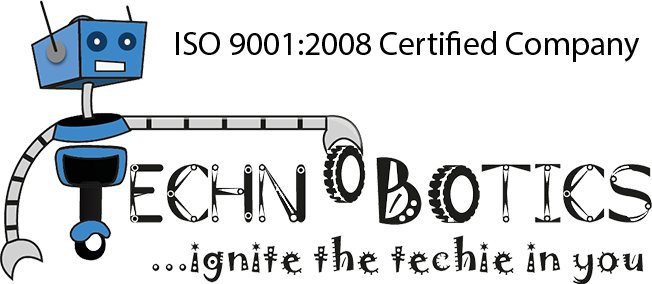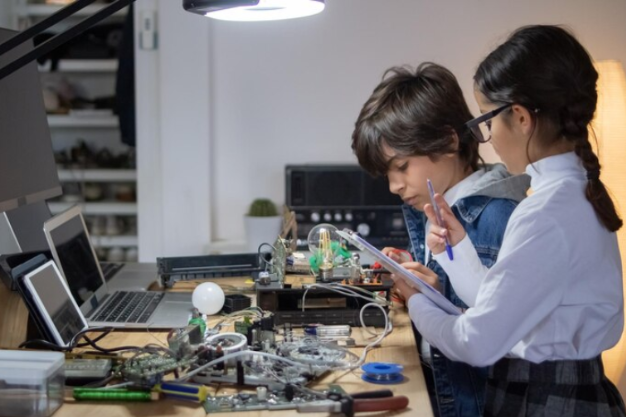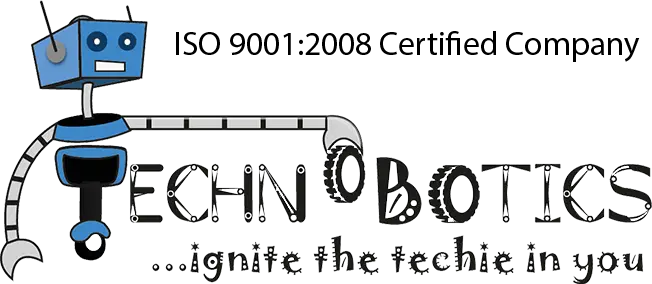Today plays a key role in shaping future generations in today’s rapidly evolving world. From smartphones to artificial intelligence, tech is everywhere. One question often asked by parents and educators is, “Is starting robotics curriculum early really important?” The simple answer is yes, and here’s why.
Robotics is more than just building robots. It involves understanding how technology works, facing challenges, and developing the essential skills to succeed in today’s fast-paced world. Introducing robotics early can significantly impact children’s cognitive development, career readiness, and overall understanding of science and technology.
At Technobotics we believe in starting young, and that’s why early exposure to robotics through programs such as Arduino programming courses, school robotics curriculum, and STEM education is crucial.
1.Foundation in Critical Thinking and Problem Solving
Learning robotics at an early age fosters critical thinking. When children are introduced to a school robotics curriculum, they are encouraged to deconstruct intricate problems into smaller components and devise effective solutions. This trains their minds to think logically, preparing them for robotics and life.
For example, students who participate in Arduino programming courses engage with coding, electronics, and robotics. They learn to program sensors and motors, build circuits, and integrate them into a functioning system. This process strengthens their problem-solving abilities and builds confidence in tackling challenges.
2.Hands-on Learning Experience with STEM
STEM education, which stands for Science, Technology, Engineering, and Mathematics, is gaining popularity due to its focus on practical and hands-on learning experiences. When kids participate in robotics and electronics courses in Mumbai, they do not just sit in front of a textbook; they actively engage in building, testing, and experimenting with robots and circuits.
Robotics introduces children to engineering concepts early on. They learn how gears, motors, and circuits work, providing a practical understanding of theoretical concepts. This hands-on experience is critical for students to grasp STEM subjects and fully see their real-world applications.
3.Preparation for Future Careers
The world is quickly moving towards automation, artificial intelligence, and advanced technology. Robotics, automation, and programming are essential skills for many future careers. Integrating robotics into early education makes students more likely to pursue careers in tech-related fields. Programs like the electronics courses in mumbai and Arduino programming courses provide students with a head start. They introduce fundamental programming, engineering, and electronics concepts that are becoming essential in the modern job market.
Programs like the electronics courses in mumbai and Arduino programming courses provide students with a head start. They introduce fundamental programming, engineering, and electronics concepts that are becoming essential in the modern job market.
4.Boosts Creativity and Innovation
Robotics is one of the few subjects that combines creativity with technical skills. Building robots allows children to create something from scratch, inspiring innovation. Whether designing a robot for a specific task or programming one to follow commands, kids use their imaginations to solve problems and invent new solutions.
Technobotics’s school robotics curriculum is designed to encourage creativity alongside technical education. Students who understand how robots work are empowered to imagine and create their designs, boosting creativity and innovation.
5.Enhances Teamwork and Collaboration
Collaboration is essential for sharing ideas, dividing tasks, and achieving a common goal when working on a robotics project. This teaches them valuable teamwork and collaboration skills applicable to their academic and future professional lives.
At Technobotics, we focus on collaboration through team-based robotics challenges. These activities promote communication and teamwork, which are critical for success in any field.
Important Points on STEM Education
- Real-World Applications: STEM education connects students with real-world scenarios, helping them understand how science and technology are used in everyday life and various industries.
- Interdisciplinary Learning: STEM combines multiple subjects like math, science, technology, and engineering, allowing students to explore and understand their interconnectedness.
- Critical Thinking and Innovation: Certainly! Here is the revised text: “STEM education emphasizes developing critical thinking skills and generating innovative solutions through problem-solving.
- Career Readiness: STEM prepares students for future job markets that increasingly rely on technology and innovation, offering them a head start in growing fields like robotics and programming.
- Hands-on Learning: STEM promotes experiential learning through experiments and projects, which helps students better retain knowledge and develop practical skills.
Conclusion
Starting robotics early is not just about learning how to build and program robots; it’s about setting children up for future success. By integrating Arduino programming courses, school robotics curriculum, and STEM education, children can develop essential skills in problem-solving, creativity, and teamwork while preparing for careers in technology and innovation.
At Technobotics, we believe in starting young and providing the right tools to help students thrive in the modern world. Our comprehensive courses, including electronics courses in Mumbai, ensure that students have the practical knowledge and experience to succeed in this rapidly evolving tech landscape.


